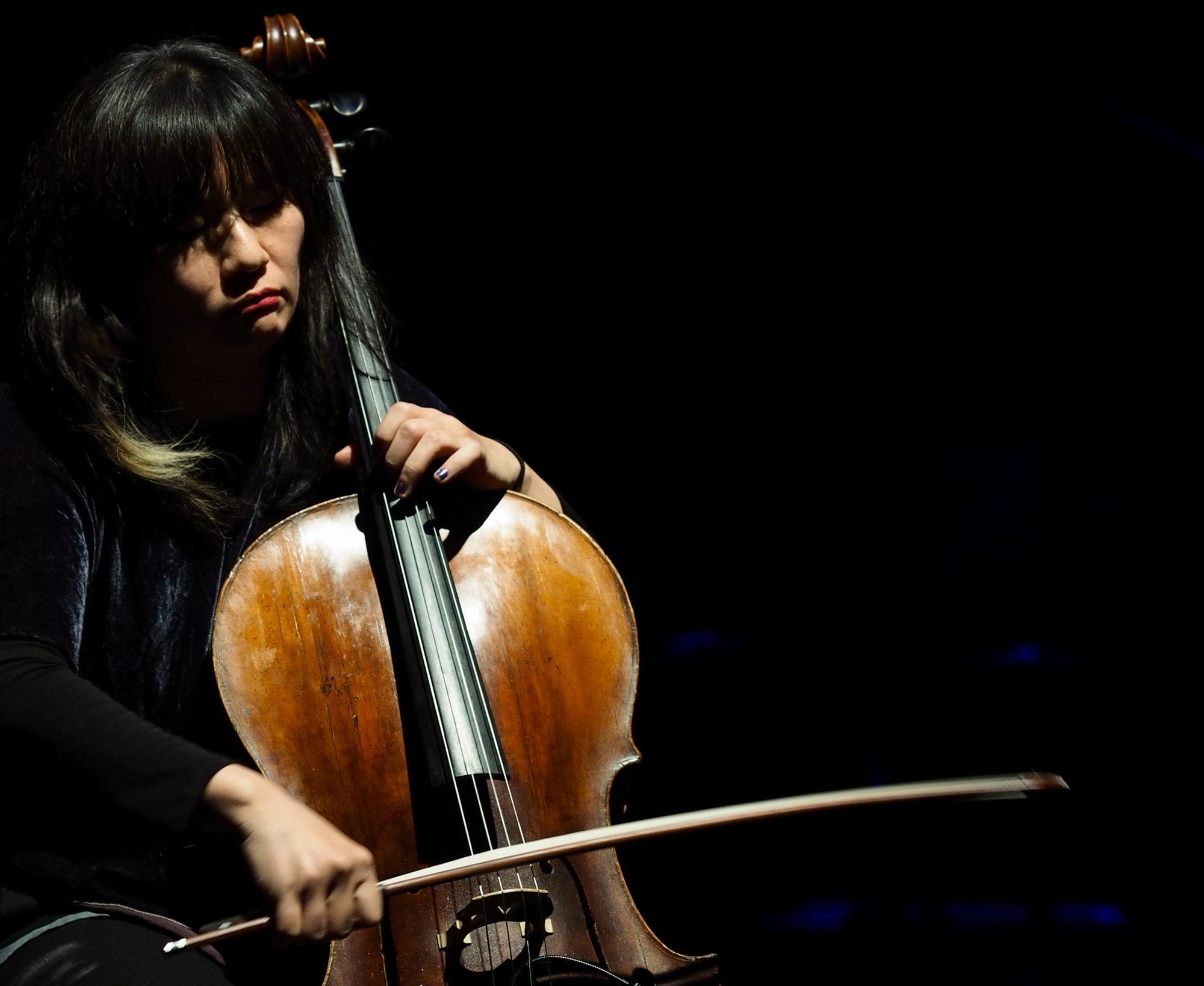
Like many musicians termed avant-garde, Okkyung Lee is an artist whose body of work is notable for the range of experimentation within it. The delicate and the chaotic often flow into one another both within and between creative moments, improvisational performances, and sessions generative of any number of ideas building on one another in unpredictable ways.
On new album Yeo-Neun, Lee and her string-based quartet (Maeve Gilchrist on harp, Jacob Sacks on piano, and Elvynd Opsvik on bass) move quickly and constantly, continuing to embrace the unexpected. The title itself, when translated from Korean, suggests a process of opening, a journey into the spacious — fitting for the aesthetics that bind the album together. Gilchrist’s harp is at once luxurious and minimalist, softly luscious chords echoing in empty space, single plucked notes sparse and fast over dire keys. She trades off or collaborates on lead melodies with Sacks, whose dynamic piano playing is nevertheless often wisely understated. Opsvik’s bass is an often near-imperceptible constant, holding down fundamentals or subtly driving forward a given piece with rolling pizzicato.
When it comes to her instrument, Lee is generally reserved — at first. Often, her cello plays from the shadows, as in the case of the legato notes underscoring with utmost care the exquisite dance of harp and piano on the stand-out composition “The Yellow Porcelain Bird”. At other moments, she uses it to create new textures; its jagged creaks on “In Stardust” grow from slow squeaks to mountains of harsh, dragged-out shapes that give the otherwise ambient piece definite edges. On tracks like the penultimate piece “Facing Your Shadows”, it fuels a frenzy of sonically dissonant-yet-emotionally synchronized strings, a clear climax that gives way to the soft denouement of “Then, There”, where the quartet’s slow harmonies allow for a fittingly ambiguous ending.
Directly influenced by music in Korean and Western folk and classical styles, Yeo-Neun is beautiful for both the simplicity at its core and how Lee constantly subverts tradition with space and noise, playing with expansion and contraction. This album is an early summer storm, a warmth that builds until it bursts, undercurrents of volatility just past the placid. In Lee’s world, turmoil is, for its impact, fleeting — the ethereal stretches onward from the ever more distant past.
As contemporary classical goes, Yeo-Neun is jarring. As avant-garde noise music goes, it is positively serene. It lies in the space between them, which will make some listeners uneasy and fascinate others. Those in the former category would be well-advised to take cues from the latter. Okkyung Lee and her quartet strike a splendid balance between free-floating and uncomfortably tense, and the suspense is worth savoring. Audience members looking for solid resolution should keep looking. Yeo-Neun, like many of its constituent tracks, doesn’t come to an end so much as evaporate, and it’s easy to feel a little unsatisfied. But that is, perhaps, another aspect of Yeo-Neun worth some reflection.
As Okkyung Lee draws on her past and broader background in making her music, she relishes the uncertainty and open-endedness of the future. Even as the bottom drops out of each piece, Lee reminds us that the way, always and in everything, is forward.

